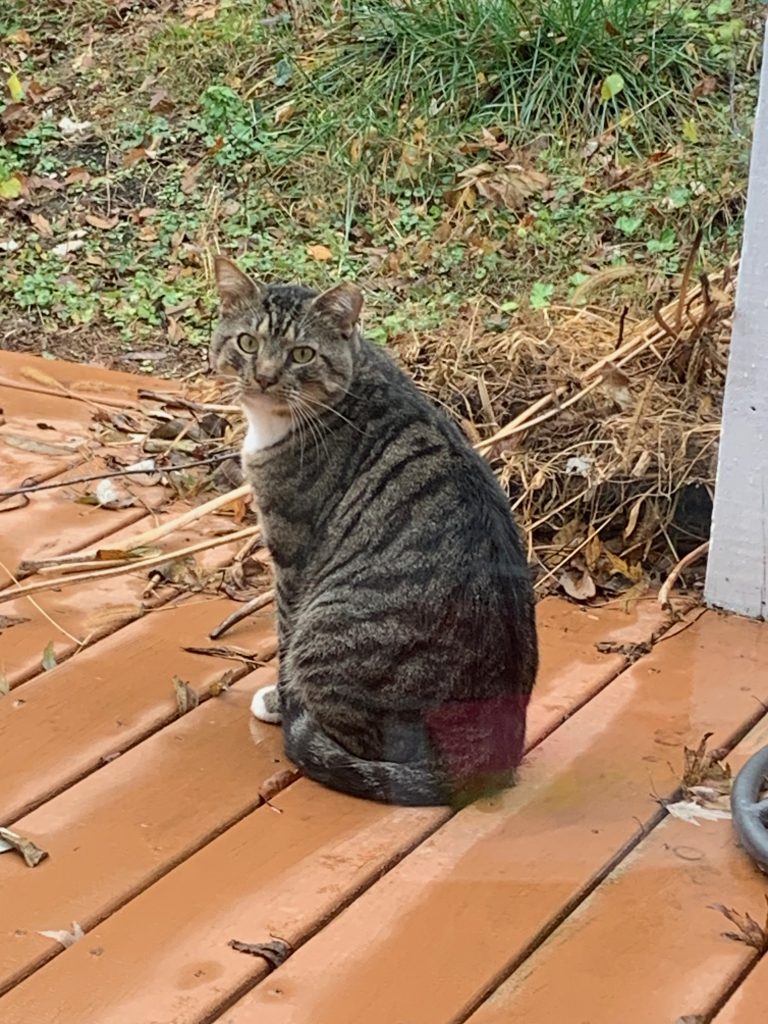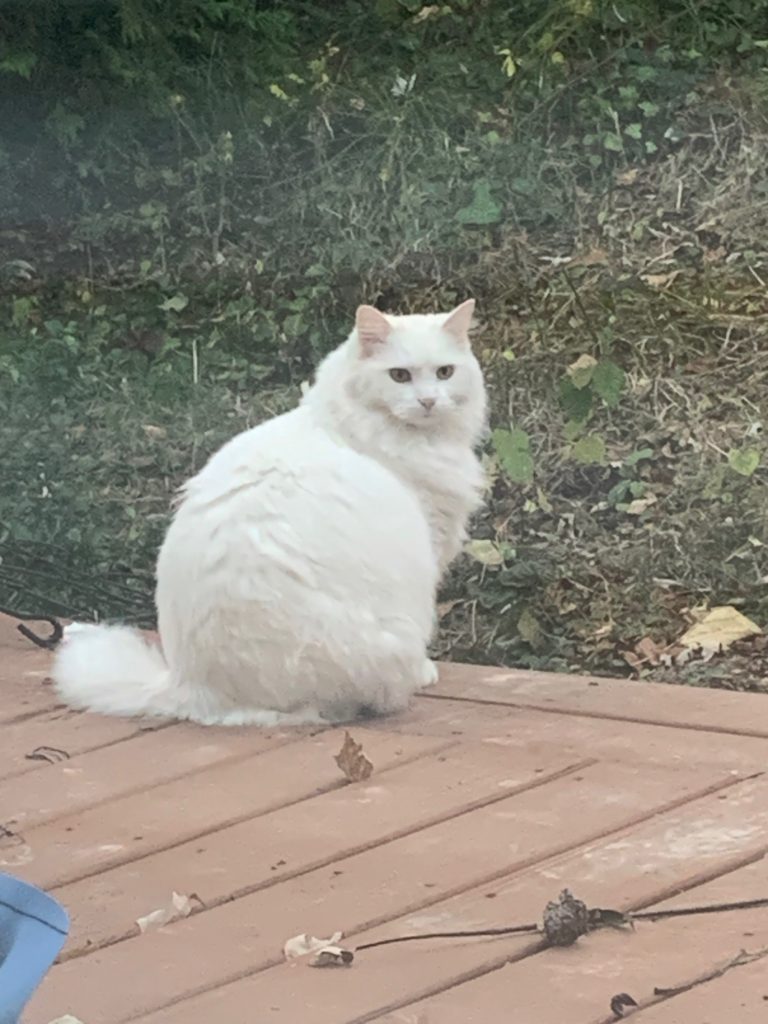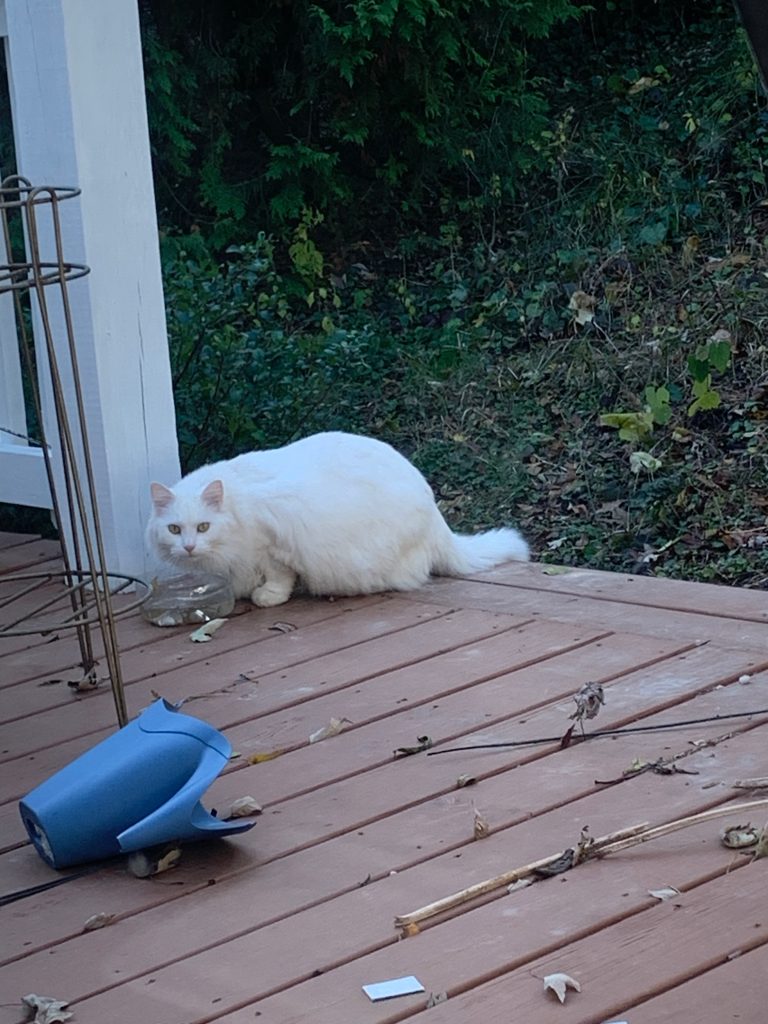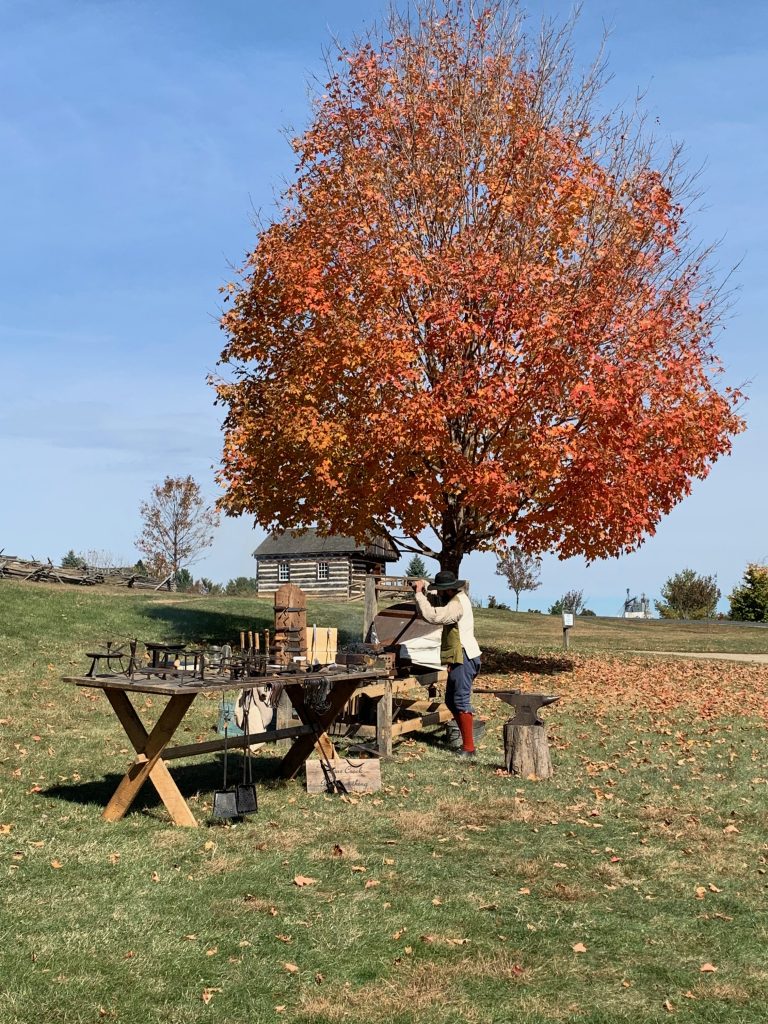Life
The Neighborhood Cats
One interesting feature of my new neighborhood is that it comes with cats. There’s a colony of feral cats that makes the neighborhood home, and they wander from house to house. My house seems to be a highway between two of the houses that leave food for them, so even though I don’t leave food out, they still pass through my yard or across my deck. The neighbors say the cats hung out on my deck while this house was abandoned.
There’s a lady the next street down the hill who is the primary caretaker. She has little insulated houses for them and feeds them, and it’s apparently a gray area of whether she “owns” the cats. She considers them hers, but I don’t know that she’s providing veterinary care or has any kind of registration. Some of the cats have tipped ears, indicating that they’ve been trapped, neutered and given some vaccinations, and then re-released. They aren’t friendly or cuddly cats. They usually bolt at the sign of a human. The neighbors say we don’t have a problem with mice or rats around here, so that’s a good thing.
Even though the cats aren’t friendly and run at the sight of me, I enjoy observing them. I’m not really a cat person in the sense that I’ve never had a cat, though I don’t dislike cats. If I see one, I want to pet it. But I’m pretty allergic to them. Whenever I’ve spent the night in a house with a cat in it, I’ve come down with a bad case of bronchitis, so I will not be adopting a cat to live with me. This is almost the next best thing, aside from not getting to pet the kitties.

Among the regulars is this gray one. It’s a bit less skittish than the others. I was easily able to get a picture through my glass door, even though it spotted me. I leave a dish of water on the deck, and this one will come meow at me through the door when it’s had a drink or when I need to refill the dish (though it will flee if I go outside to fill the dish).
The main regular, though, is the elusive white cat one of my neighbors said she thinks is haunted or possessed. I don’t know about that, but I know that the squirrels are less skittish around me than this cat is. It will flee if it even sees me through the window. I’ve been calling it The Magnificent Floof because just look at how fluffy this cat is. I’m amazed that a stray manages to stay this white and clean. Although it looks pretty magnificent much of the time, this cat is kind of a dork.

For instance … There was one day when I was sitting on my deck. I had music playing and was reading something on my computer, so it wasn’t a surprise that I was there. This cat must have wanted to travel the highway, going from under the fence, up the steps to my deck and then down the stairs that go from my deck down the hill to the street level (my house is built into a hill, so the deck is off the upstairs, which is ground level in back), so it was trying to sneak past me, going between the table and the deck railing. I glanced over just as the cat was trying to sneak past, and the expression on its face made me laugh out loud.

Imagine a teenager coming home after curfew to find that all the lights in the house are out. They think this means if they sneak in quietly and get in bed, no one will know they came home late. When they’re halfway through tiptoeing across the living room, the lamp next to their dad’s recliner suddenly comes on, and they realize their dad has been waiting up for them. They’re so busted. That was exactly the look on this cat’s face when I looked at it. It froze for a second, then it backed all the way to the steps down from the deck to the back yard before turning and fleeing.
This morning it was trying to sneak past while I was sitting in the living room, and when it passed the glass door, I said, “Hey, kitty.” It stopped, looked around, then finally spotted me inside the house, jumped in fright, turned, and ran. When it got down the steps into the yard, it turned back to look at the house, and when it saw me through the window, it turned and ran away.
This cat is also obsessed with the groundhog that lives in a hole on the side of the hill (the hill my house is built into continues to rise behind the house. There are few flat surfaces in this whole town). The only time the cat doesn’t bolt if I appear is when it’s waiting outside the groundhog’s hole. Sunday I was watching the cat as it seemed to be making laps around my yard, then started nosing around the groundhog hole. Just then, the groundhog emerged from the hole, and I swear, that cat teleported across the yard. It was in one place, there was a moment of confrontation, and next thing I know, the cat is on the opposite side of the yard. It waited there a second, eyeing the groundhog like it was trying to decide what to do, then turned and walked away like “I meant to do that.” The groundhog stood outside the hole for a while, looking smug and radiating “King of the Mountain” energy. The cat has gone back to the hole a few times since then, but is being much more cautious about it. It seems to like stalking the groundhog, but it would rather not actually encounter it.
Aside from not having to worry about mice, one other nice thing about the neighborhood cats is that I finally have cat pictures to post on the Internet. That seems to be the key to engagement. I wonder if I could leave out one of my books and get pictures of one of the cats with it. It’s tricky to get pictures. I have to take pictures through the glass door and do it quickly before the cats notice me and flee. Or I could edit cats into pictures with my books. Cat pictures in general are the key to getting attention online.







